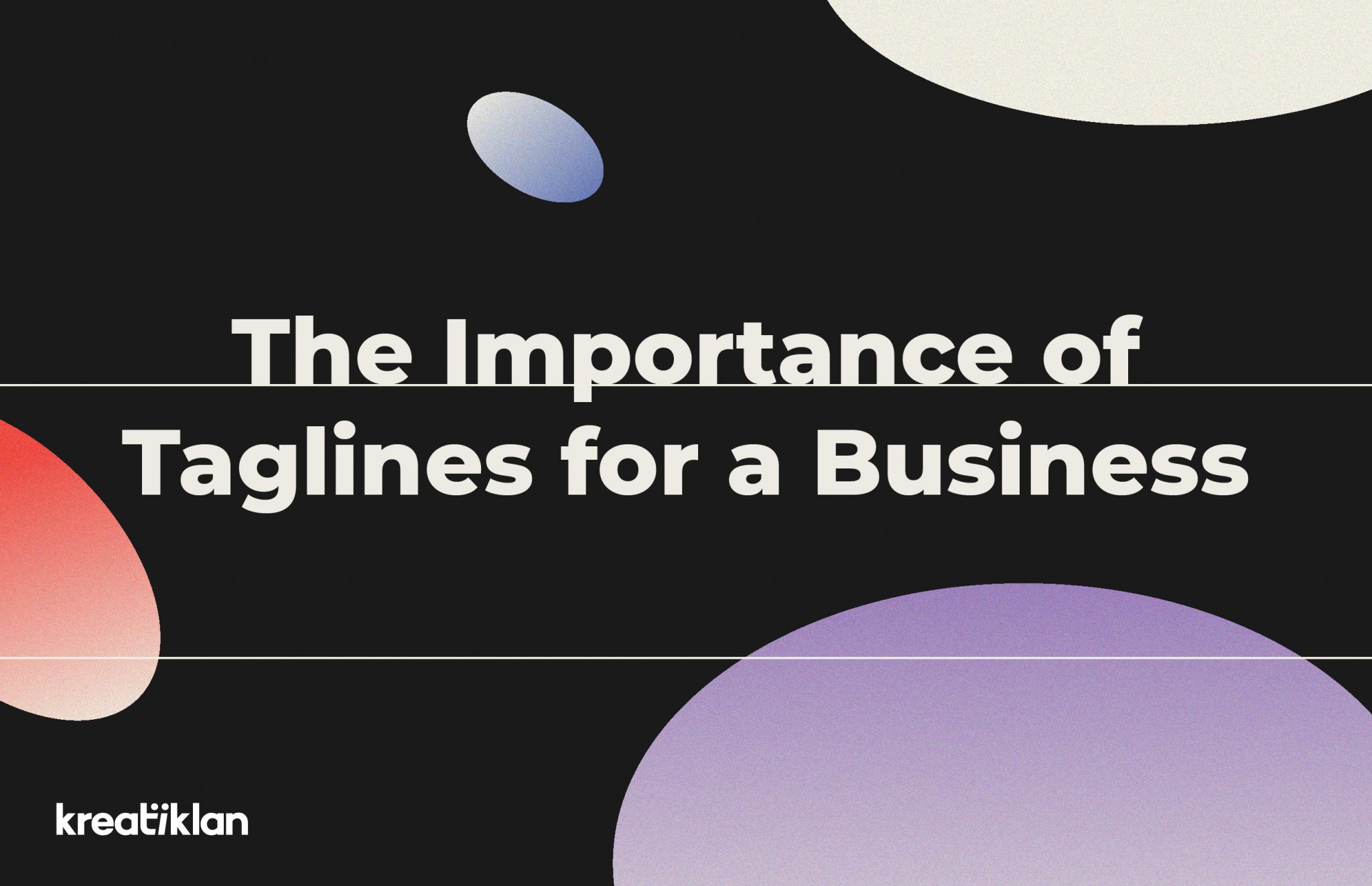BLOGS & THOUGHTS
A descriptive subtitle

What is a Tagline? Types & Examples – #KREATALKS
In the current era of digital marketing, it is important, every product and business must always be able to show itself above the competition. One way that can be done is to create an attractive tagline. The tagline is not just a slogan, but also the identity and characteristics of the product. So, what is a tagline? Here's the full explanation.
In simple terms, a tag can be interpreted as a slogan that is closely related to a product or individual. Taglines can be used to introduce brand meaning and adopt advertising language in order to attract public attention to further arouse curiosity. Later, this curiosity will be converted into purchasing power for the advertised product.
There are so many taglines that prove to be the identity of a brand. In addition to the unique tagline, the tagline is also considered very easy to accept by readers. Some examples of taglines that we often encounter are "Just Do It" from Nike, "Seleraku" from Indomie, or "I'm Lovin' it" from Mc Donald and many more.
Why Is Tagline Important?
The tagline becomes a short message that is strong and stuck in the brains of consumers or potential consumers. It is designed to have a long lasting effect. The tagline is able to communicate the brand personality in short words. Check out the explanation of the advantages of having a tagline below:
- Increase Brand Awareness
Often a brand promotes its business through advertising. So, their tagline will be broadcast over and over again. The audience also often watches and hears it. It aims to send a message that makes people remember the tagline.
- Explaining Vision and Mission
The tagline helps you describe your brand's vision and mission. For example, the Disneyland tagline “The Happiest Place on Earth” means that Disneyland can represent the happiest place and atmosphere in the world. - Strengthening Brand Position
The tagline also serves to strengthen positioning in the minds of the market or target market. This means that the product is easier to remember by the public, making it easier to market the product. - In Comparison with Competitors
The tagline serves as a differentiator with competitors if your tagline is more attractive than competitors automatically people will be more interested in your brand. - Strengthening Business Identity
Providing or creating a tagline also helps strengthen the identity of a product. This product is easy to identify, looks different from other products, and is also easier to remember.
As we have explained together above, that tagline is an expression used by a business to attract the attention of its customers. In Indonesia itself, taglines are often referred to as jargon, mottos, or slogans. There are several types of taglines that we often encounter, see the explanation below:
Superlative Tagline
Superlative tagline has various elements of intimidation, making it look even more provocative.
“Jelas Lebih Enak” from Kapal Api.
“Semakin di Depan” from Yamaha.
Provocative Tagline
A provocative tagline has an element of invitation or challenge that provokes logic and emotion from the public or the audience. In fact, some provocative taglines also often use a question mark at the end of the tagline.
“Orang Pintar Minum Tolak Angin” from Tolak Angin.
Specific Tagline
Specific tagline is a tagline that advertises a slogan with a special advantage of the brand itself. This tagline will give the impression that the brand is the most superior among other competitors.
“Apapun makanannya, minumnya Teh Botol Sosro” from Teh Botol Sosro.
Descriptive Tagline
A descriptive tagline is a tagline that provides an explanation of a product, and contains excellence in terms of service and sweet promises, thus making people believe in the superiority of the brand.
“The World’s Local Bank” from HSBC Bank.
"Im Lovin it!" from McDonalds.
"Seleraku" from Indomie.
Imperative Tagline
A Imperative taglines are taglines that tend to be more assertive in an action that always begins with a verb.
“Untung Pakai Esia” from Esia.
“Mengatasi Masalah Tanpa Masalah” from Pegadaian.